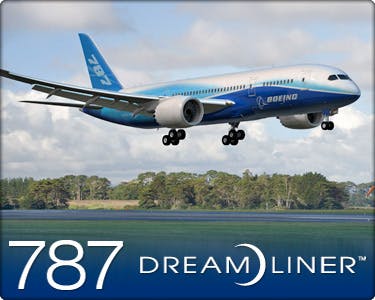We had a popular discussion this week about HR’s seat at the table that sparked some ideas in my head about how HR continues to evolve and change and how, in some ways at least, it stays the same.
We’ve seen many instances where talent management has fallen behind the creativity and progressiveness of operations, marketing, or sales. We know of good consumer products that are somehow the result of bad talent management practices (or maybe just happen in spite of them), and there is a lot of focus devoted to these situations.
But what if a company was doing it the right way — being progressive, using creative talent management strategies, and enhancing the product with great strategy that actually mirrors the supply chain?
Boeing’s example
When Boeing was creating the 787 Dreamliner, they went back to the drawing board on a lot more than just the basic design. They were building an airplane that would operate profitably in a new world of higher fuel prices, customer expectations, and increased reliability factors. They were building an airplane for the airlines.
It seems like that should be common sense, but airplane manufacturers have simply been limited by technical challenges. But a plane made from state-of-the-art composite materials posed a different challenge. Instead of the supply chain they had created to make the many other planes in Boeing’s arsenal, they had to go to far flung places to find the composite materials needed to build their new Dreamliner. And that’s where talent management came in to the picture according to John W. Boudreau on the Harvard Business Review blog. He says:
But with the strategic decision to shift to the composite technology that necessitated this supply chain came a shift in the company’s talent strategy as well. The pivot-point of talent management shifted from being entirely within Boeing to the talent and ideas that resided in Boeing’s suppliers. Therefore, like many other HR leaders today, the company had to learn to manage a sprawling global supply chain for talent as well as components.
It turns out, in fact, that supply chain, inventory, and risk-optimization are good metaphors for the way that HR leaders need to think about their talent pipeline — because the logic applies to both. When leaders make choices about talent sources, talent inventory, and how to make the mix of talent pipeline components optimize cost, risk, and strategic success, they are doing so with the same “return on improved performance” goal as a traditional supply chain manager.
And while the 787 Dreamliner hasn’t been the smoothest project going forward, it is a great example of flexible and adaptable talent management strategies that will be needed for manufacturing to survive and thrive in the United States.
